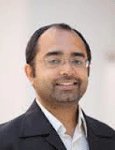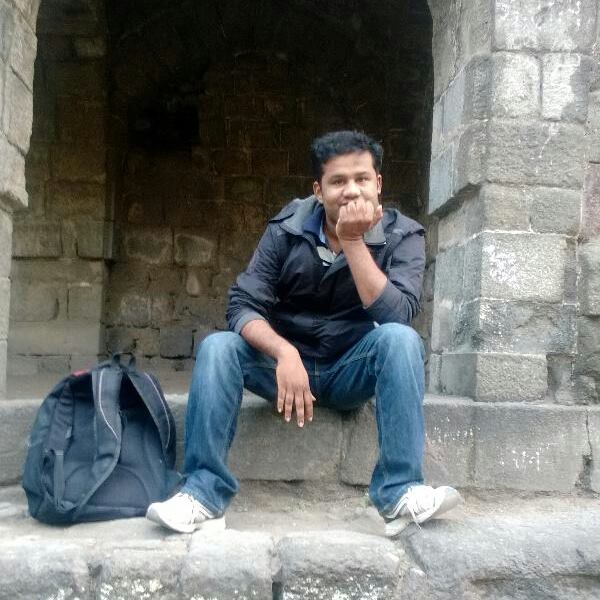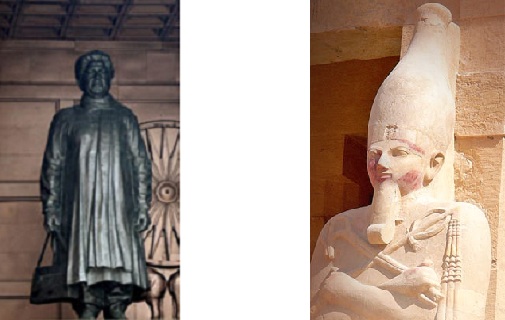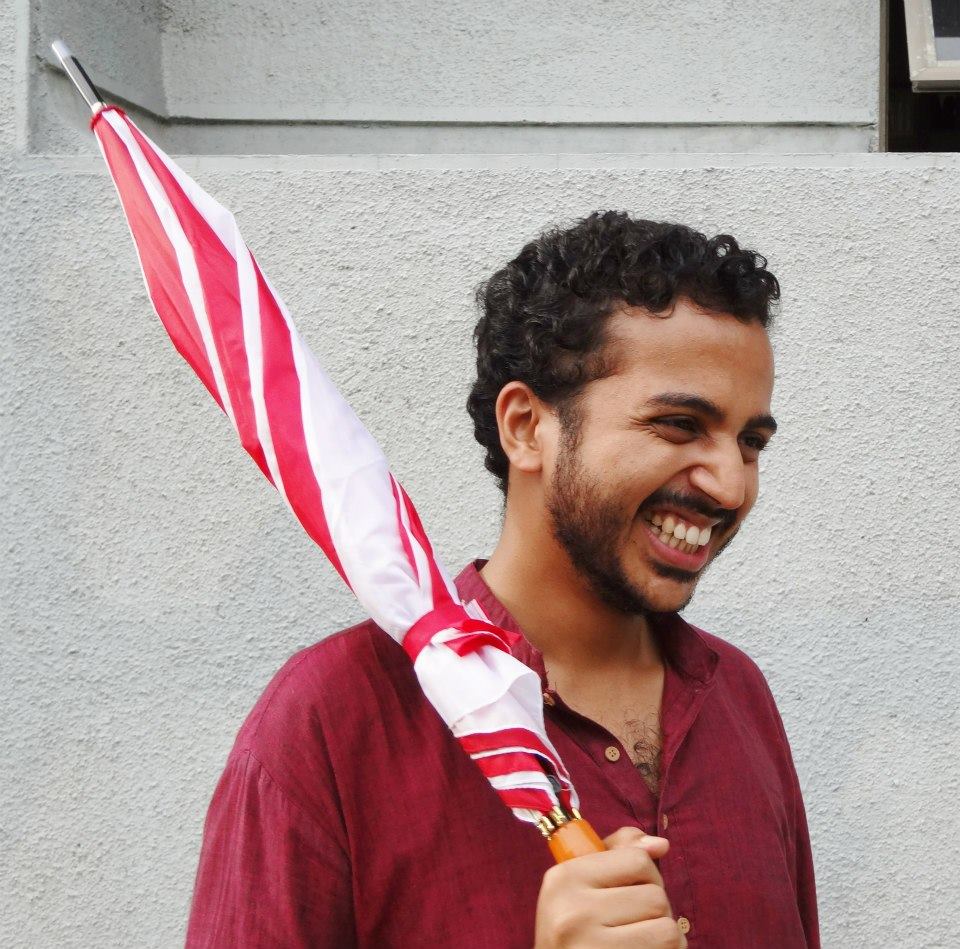Indrajit Roy
 As political commentators celebrate or bemoan the supposed change in the Indian polity with the ‘advent’ of Narendra Modi, it is important to highlight the fact that political parties were largely silent about social justice during the just-concluded elections. In fact, two of the largest political parties- the party that won the elections as well as the party that lost the government- questioned the appropriateness of the existing policy of affirmative action. Their pronouncements revealed a remarkable apathy towards the cause of social justice and were designed to bolster privilege.
As political commentators celebrate or bemoan the supposed change in the Indian polity with the ‘advent’ of Narendra Modi, it is important to highlight the fact that political parties were largely silent about social justice during the just-concluded elections. In fact, two of the largest political parties- the party that won the elections as well as the party that lost the government- questioned the appropriateness of the existing policy of affirmative action. Their pronouncements revealed a remarkable apathy towards the cause of social justice and were designed to bolster privilege.
Caste, discrimination and poverty
Congress General Secretary Janardhan Dwivedi proposed a month prior to the commencement of the elections that the present scheme of reservations for Scheduled Castes and Scheduled Tribes be done away with and replaced by affirmative action for the economically poor. Such a proposal is based on a flawed understanding of the way in which caste and economic poverty shape one another. Although the Party’s manifesto subsequently assured voters that it would not tinker with the existing system, it is disconcerting that a politician of Dwivedi’s stature could even make such a remark and retain his position in the Congress hierarchy.
The links between caste and poverty are well documented, and can be gleaned from the official data. The official data remains suspect because of deliberate misreporting to show the greater representation of Scheduled Castes (SCs), Scheduled Tribes (STs) and Other Backward Classes (OBCs). Despite this, official data remains an important source of information for the ways in which poverty is disproportionately concentrated among specific caste clusters. Consider the experiences of Dalits, officially classified as SCs, even after six decades of affirmative action. Data from the census of India shows that they make up 16% of the Indian population, but constitute 26% of all agricultural laborers. The Government’s Ministry of Personnel reports that 17% of all its employees are Dalit. However, less than 12%% of the highest-ranking officers and half of all sweepers are Dalit. The overwhelming majority of the country’s manual scavengers are Dalit. Their disproportionate overrepresentation in low-status jobs and underrepresentation in high-status jobs cannot be missed. The 2010-11 Agricultural Census reveals that the average size of land holdings is 1.16 hectares for all social groups, but only 0.80 hectares for Dalits. The Rural Labor Enquiry suggests that, in 2004-5, while 42% of all rural households were landless, as many as 57% of SC rural households were so.
This is the situation of Dalits. In public sector employment, the situation of OBCs, estimated to be between 41 and 52% of the country’s population is even more dismal. They hold less than 15% of government jobs, according to the 2012 report of the Ministry of Personnel. Again, this data appears to be suspect, in the light of an older 2007 report in the Times of India which pegged the figure for OBC job shares at 5%. It is unlikely that the figures leapt up from 5% to 15% in five years. Nonetheless, even if we accept the 15% figure of the Ministry of Personnel, the same report also notes that OBCs hold only 8.4% of the Grade A jobs.
On other indicators, they are slightly better-off than Dalits and/ or Adivasis, but fall way behind the privileged communities. Economists Ashwini Deshpande and Rajesh Ramchandran tell us why on the basis of analysing the data generated by the National Sample Survey Organisation (NSSO). The NSSO compiles data according to three social clusters: the SC/ST, OBCs, and ‘Others’. If the Monthly Per Capita Consumption Expenditure (MPCE) for the category of ‘Others’ was ‘ 100, then for SC/STs the figure was ‘ 51 and for OBCs it was ‘ 65. If ‘Others’ earned ‘ 100 annually, OBCs earned ‘ 55 and SC/STs ‘ 42. In terms of educational attainments, OBCs are closer to the SC/STs than they are to the ‘Others’: the gap, in terms of number of years, between OBCs and ‘Others’ is 2.21 whereas that between OBCs and SC/STs is 1.47. In urban areas, which are often celebrated as equalizing spaces, these differentials are even starker. An editorial in the Economic Times compared the distribution of households of these three categories across income levels. They divided the entire population into ten income classes, each with 10% of the households. Less than 5% of Dalits and 7-8% of OBCs were represented in the top decile of households (against the norm of 10%, assuming that inequality- were it to exist- would be randomly distributed across categories). On the other hand, over 15% of the ‘Others’ were represented in the top decile. Note that the category ‘others’ includes groups such as Muslims of underprivileged castes who have historically been marginalized. Thus, the above data in fact understates the extent of inequality prevalent in India today. The inequalities between castes are actually much greater than what the above data indicates.
Poverty is disproportionately concentrated among Dalits, Adivasis and OBCs- both Hindu and Muslim. On the other hand, wealth and incomes are skewed in favor of the privileged communities. This does not mean of course that there are no poor among the privileged communities. But they can more easily draw on their social and cultural networks and contacts with individuals from their communities who already occupy positions of influence. Such opportunities are far fewer for members of underprivileged, oppressed and marginalized communities. Sociologists of work and labor have documented the importance of social and cultural capital- social networks, family ties and friendships- in gaining quality education and high-value employment. The well-known adage ‘Its not what you know, but who you know that counts’ is one that people with privilege freely deploy while seeking jobs and admissions in educational institutions. In fact, as late as 2006, sociologists Sukhadeo Thorat and Paul Attewell noted systematic patterns of discrimination against Dalits and Muslims in urban formal labor markets. The findings from their innovatively designed study suggested that applicants for (entry-level, non-specialised) employment in the private sector who bore privileged caste Hindu surnames were more likely to be even contacted for an interview than those using Muslim or Dalit surnames.
Routes out of poverty include good quality education and employment in high-value sectors. When access to such opportunities is determined by social networks, contacts and family backgrounds, policies of affirmative action in favor of those who are unable to demonstrate these ‘credentials’ are not only desirable but absolutely essential. In a society where caste continues to determine social networks and family ties (as a look at any matrimonial forum will tell us), policies of positive discrimination and affirmative action cannot but be based on caste. Talking about replacing this system with affirmative action based on economic poverty ignores this reality.
Fairplay?
The BJP’s gameplan regarding affirmative action is perhaps even more sinister, couched as it is in the language of fairness for the underprivileged. The party is reported to be ‘actively considering’ the exclusion of third generation children of families who have availed of affirmative action from its ambit. The reasoning behind this proposal is that the ‘reserved’ jobs were being cornered by members of specific castes and families, rather than being distributed across the different Dalit communities. However, their apparently noble proposal is strangely quiet about the way in which government jobs are cornered in the so-called ‘general’ category. It is uncannily silent about the way in which certain castes and sub-castes corner resources in the private sector, which represents for all practical purposes an arena of affirmative action for the privileged classes of the privileged communities. One statistic from the National Backward Classes Commission is illustrative: Brahmans- who contribute less than 6% of the Indian population, make up 37% of the bureaucracy. Another statistic is even more telling: seven out of the top ten Indian names on the Forbes list of dollar billionaires are Vaishyas, a community that comprises a mere 4% of the Indian population. The economists Sonalde Desai and Amaresh Dubey point to the large number of banks owned and controlled by the tiny caste of Saraswat Brahmans. Perhaps the BJP should direct its attention on the cornering of jobs and opportunities in the proliferating private sector rather than going hammer and tongs after the few reserved jobs in the receding public sector.
Six decades of affirmative action have barely dented the hold of the privileged communities on the public sector employment: based on the available data from the Ministry of Personnel, we may derive the proportion of members of the privileged communities, the so-called ‘upper castes’, as Grade A officers to be in the region of 70-75%. Now, the most liberal estimates of the privileged caste population would suggest they are less than a quarter of the Indian population. A quarter of the Indian population controls nearly three-quarters of the country’s high-value public sector jobs and the overwhelming majority of high-value private sector jobs! If this is not injustice, what is?
The Congress and the BJP: Bastions of privilege
The machinations of both the Congress and the BJP reveal dubious attempts at isolating those sections from among the Dalits who are most likely to mount a challenge to the privileged communities. This is a re-enactment of earlier strategies through which the privileged communities bolstered their caste-class influence. When the OBCs began asserting themselves against the privileged communities, the latter devised the concept of the ‘creamy layer’ to skim off the growing threat to their position. This has left OBCs today with even lesser representation in public services today than what the Mandal Commision had noted in 1977. Media reports of unfilled vacancies in the OBC quota are common. Employers claim they cannot find qualified candidates. This is potentially caused by excluding the ‘creamy layer’ from which the best and the brightest applicants were drawn. Vacancies left unfilled for three years must be transferred to the general quota, adding to the dominance of the privileged communities over public services. A similar fate awaits the Dalits and the Adivasis if the BJP’s proposals are followed through. Moreover, the strategy appears to be directed at undermining the growing influence of those Dalits who, having gained in political, socio-economic and educational confidence, refuse to be incorporated into networks of protection and patronage instituted by privileged communities.
Clearly, the privileged castes will brook no challenge to their privilege. To that political end, they have ensured their continued dominance over the two largest political parties in the country. Indeed, the highest echelons of decision-making on both parties remain overwhelmingly in the hands of the privileged communities. At least six of the twelve General Secretaries of the Congress Party are drawn from these backgrounds, while its only vice-president is, well, drawn from a VERY privileged background! The BJP’s organisational structure is probably more diverse, but continues to be skewed in favor of individuals from privileged community backgrounds. At least eight of its thirteen Vice-Presidents and four of its ten General Secretaries are drawn from these communities. This perhaps explains why neither party has taken substantive steps to redress the historic injustices inflicted upon members of the oppressed communities.
Perhaps the most important indicator of the favorable orientation of these parties towards the privileged communities is to be sought in the electoral behavior of these communities. The privileged communities demonstrate an unambiguous preference for both political parties. The analysis of the CSDS’ National Election Survey data from 2009 (long before the ‘Modi’ factor galvanized the privileged castes) shows that in a State like Uttar Pradesh, where four different political parties compete for the affections of the electorate, nearly 85% of the votes cast by Brahmans and other privileged castes were directed towards these two parties (For various reasons, Rajputs were an exception). Despite there being other alternatives, the privileged communities largely patronized these parties.
The continuities are eerily uncanny. One has only to read Gandhi’s seminal piece on the ‘Ideal Bhangi’ and Modi’s more recent offering on Balmikis to gauge the continuities. In the 1930s Gandhi, the high priest of the Congress, referred to the sweeper as an ‘honored servant of society’. In a piece titled Karmayogi written a few years ago (and subsequently withdrawn after protests by members of the Balmiki community), Modi, the Prime Minister of the BJP, avers that for them ‘this job should continue as internal spiritual activity for centuries.’ Seen through the prism of social justice, the Congress and the BJP appear less as opposing political parties and more as factions of the same political ideology.
~~~
Indrajit is at the University of Oxford where he is completing a manuscript on ‘Restive Subjects: The Politics of the Poor’. His core intellectual interests lie in investigating the political sociology of economic transition with a special focus on the ’emerging markets’ India, Brazil and South Africa. He blogs at Politically Social: http://indrajit.blogspot.co.uk/.










